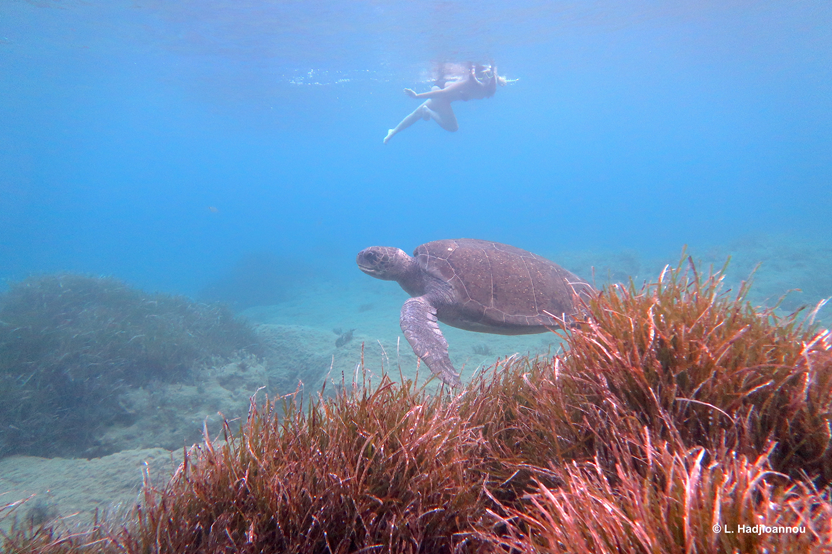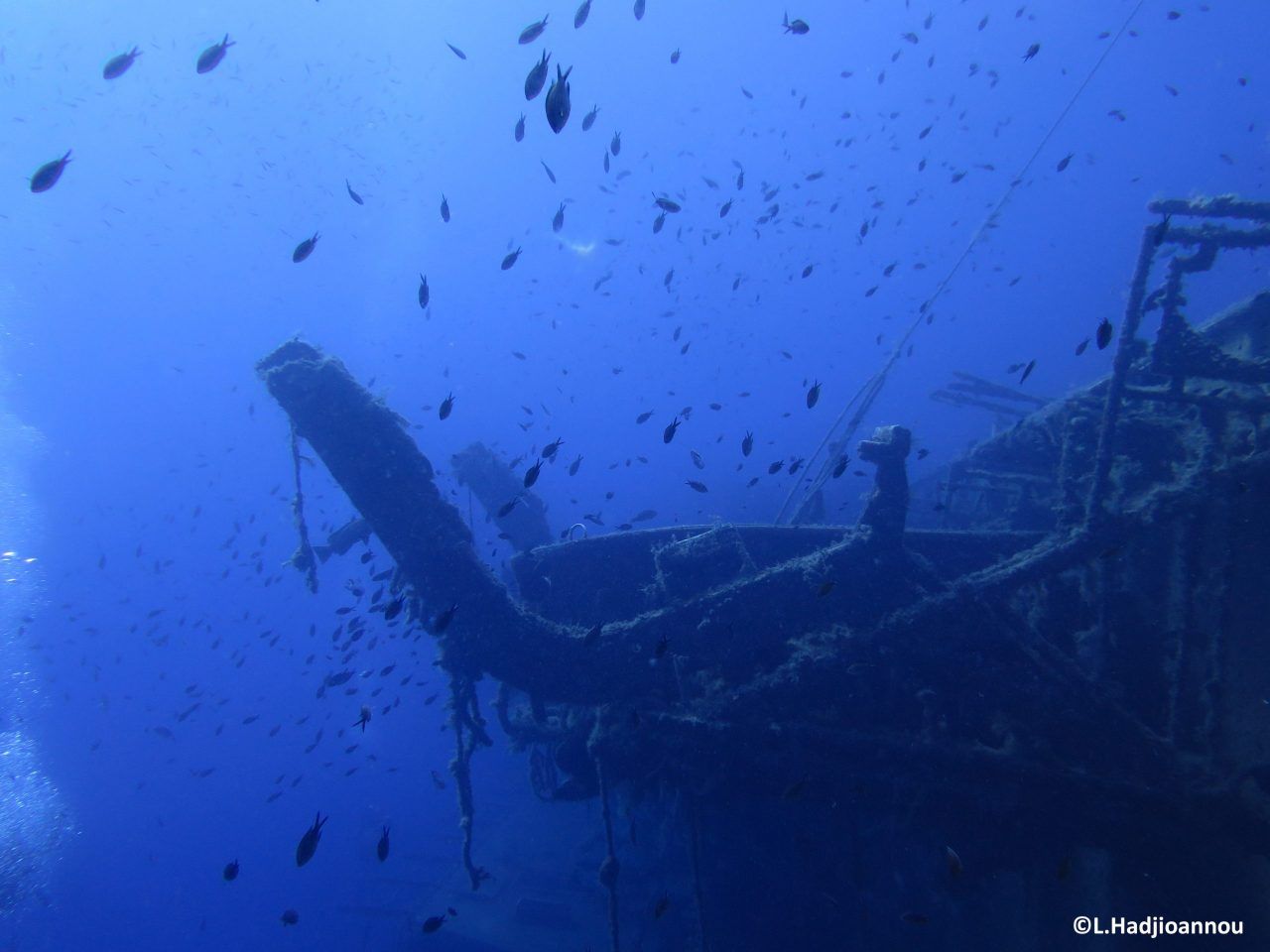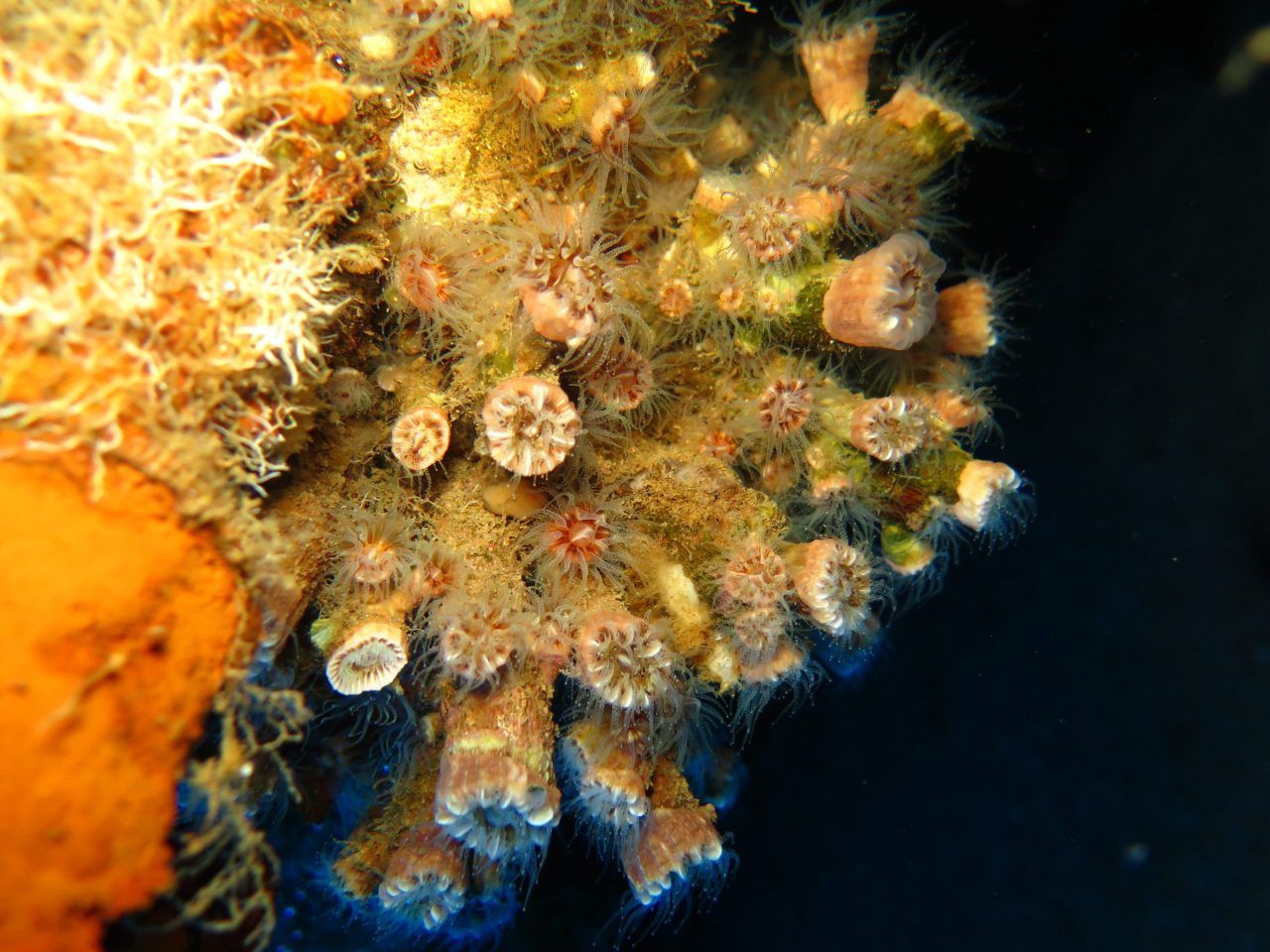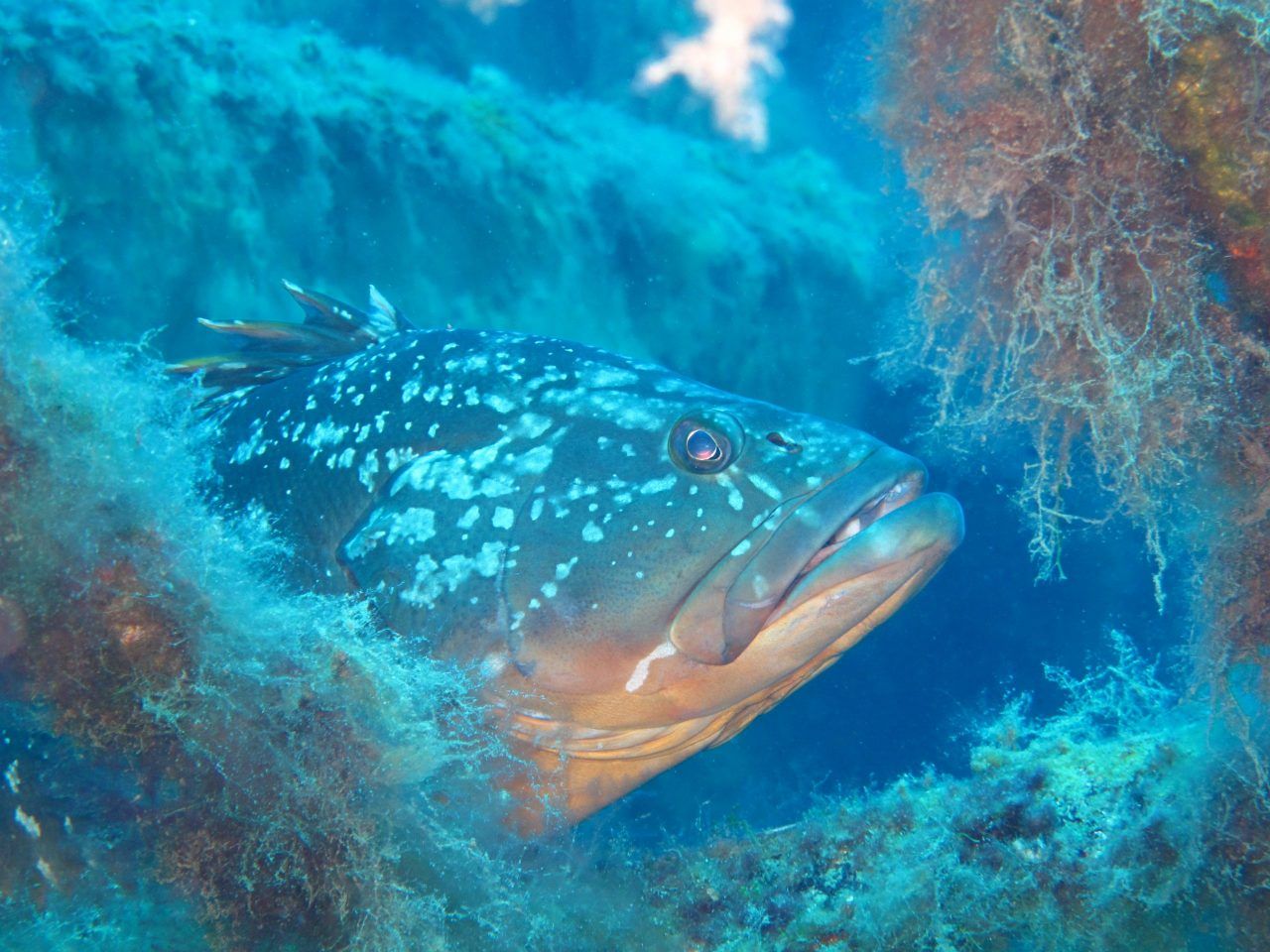Diving tourism is a tourist activity that existed on our island in the past, but has begun to be promoted and take on more significant proportions in recent years, just as it has worldwide.
People who engage in this recreational activity that we call diving tourism typically use scuba diving equipment (SCUBA) to navigate the seabed. In addition, diving tourism also includes people who swim using a snorkelling mask. There are several stages/levels of recreational diving that one can engage in. The easiest and relatively inexpensive way is to navigate using a mask and a snorkel while swimming on the sea surface. Going one step (or rather … a pedestal) closer to the bottom requires the use of scuba diving devices that allow you to stay below the surface of the water (and at several meters depth) for a long time.
Fish populations around a shipwreck
To dive with scuba diving devices, one must first be appropriately trained depending on the depth they wish to visit. There are several diving schools in all cities and tourist areas on our island, which offer training and diplomas from internationally recognized organisations. The cost is not prohibitive at all. Indicatively, obtaining a diving certificate, costs around 350-500 Euros and requires the attendance of a short training course. To deepen knowledge and dive to greater depths, the cost typically increases. Many diving centres offer introductory courses for a simple test dive, for the cost of usually not more than 100 Euros.
Diving tourism can offer great value for money, both to the participants and to the local businesses that support these activities. This type of tourism presents excellent potential in terms of economic acitivity since tourists who engage in this activity, usually travel regularly and have high purchasing power. According to a recent report by the European Commission’s Directorate-General for Maritime Policy and Fisheries, an estimated 800,000 Europeans are involved in diving tourism, typically travelling around ten days a year. Considering that there are 3.5 million divers in Europe, of which 70% choose the Mediterranean as a leisure destination, the economic impact from this group of tourists is sizeable. In addition, the number of people who use a mask and snorkel is unknown, but it is estimated to be at least twice as many as those who use scuba diving equipment.
Hard-shelled corals of the species Phyllangia muchezii
Although the seabed of Cyprus and the rest of the Mediterranean countries is considered poorer than the seabed of the tropics, it nevertheless has remarkable beauty, rich and impressive flora and fauna. Favourable climatic conditions prevail, especially in the eastern Mediterranean, with the crystal clear waters of Cyprus and the remarkable diversity of the seabed to offer a very high-quality destination for diving tourism. Existing diving trails include natural coral reefs, extensive Poseidonia meadows (an endemic marine macro-plant) unique to the Mediterranean, and impressive underwater caves.
The various shipwrecks that exist near the coasts of Cyprus create artificial reefs that attract incredible biodiversity of marine life and offer a particular interest for diving. The most striking example, which attracts thousands of tourists each year around the world, is the internationally recognized shipwreck ‘Zenovia’ located in Larnaca Bay.
Recently, coordinated efforts of the Department of Fisheries and Marine Research (DFMR) of the Ministry of Agriculture, Natural Resources and Environment in cooperation with the Cyprus Diving Centres Association and funding from the Cyprus Tourism Organisation, have managed to create additional artificial reefs as well as other special underwater constructions, in the sea area of Larnaca, Famagusta, Limassol and Paphos. Simultaneously CMMI is making efforts to create new, technologically advanced artificial reefs in collaboration with DFMR and researchers from the Cyprus University of Technology (CUT) and the University of Los Angeles. Besides their use as diving destinations, their purpose is to enrich marine life as storage reservoirs for commercial and non-commercial species, as shelters for various organisms’ different stages of development while increasing the breeding stock.
Large rock cod(Epinephelus marginatus) at the Zenovia shipwreck
Equally important are the environmental benefits of diving tourism, as diving can transmit and promote to the public the importance of protecting and conserving important marine habitats. For example, the protected meadows of Poseidonia, which are indicators of a healthy marine environment.
Research has shown on the contrary, that diving tourism can affect marine habitats depending on the frequency, quantity and quality of their visits as well as the season and the environmental conditions of the area, and endanger their environmental value. These effects can be either direct (eg, rupture of coral formations) or indirect (eg, change in water quality, increased turbidity). Through good practices, diving tourism can be used as a tool for environmental education and maximizing environmental awareness.
Dr Louis Hadjioannou, Researcher Biologist/Marine Ecologist




